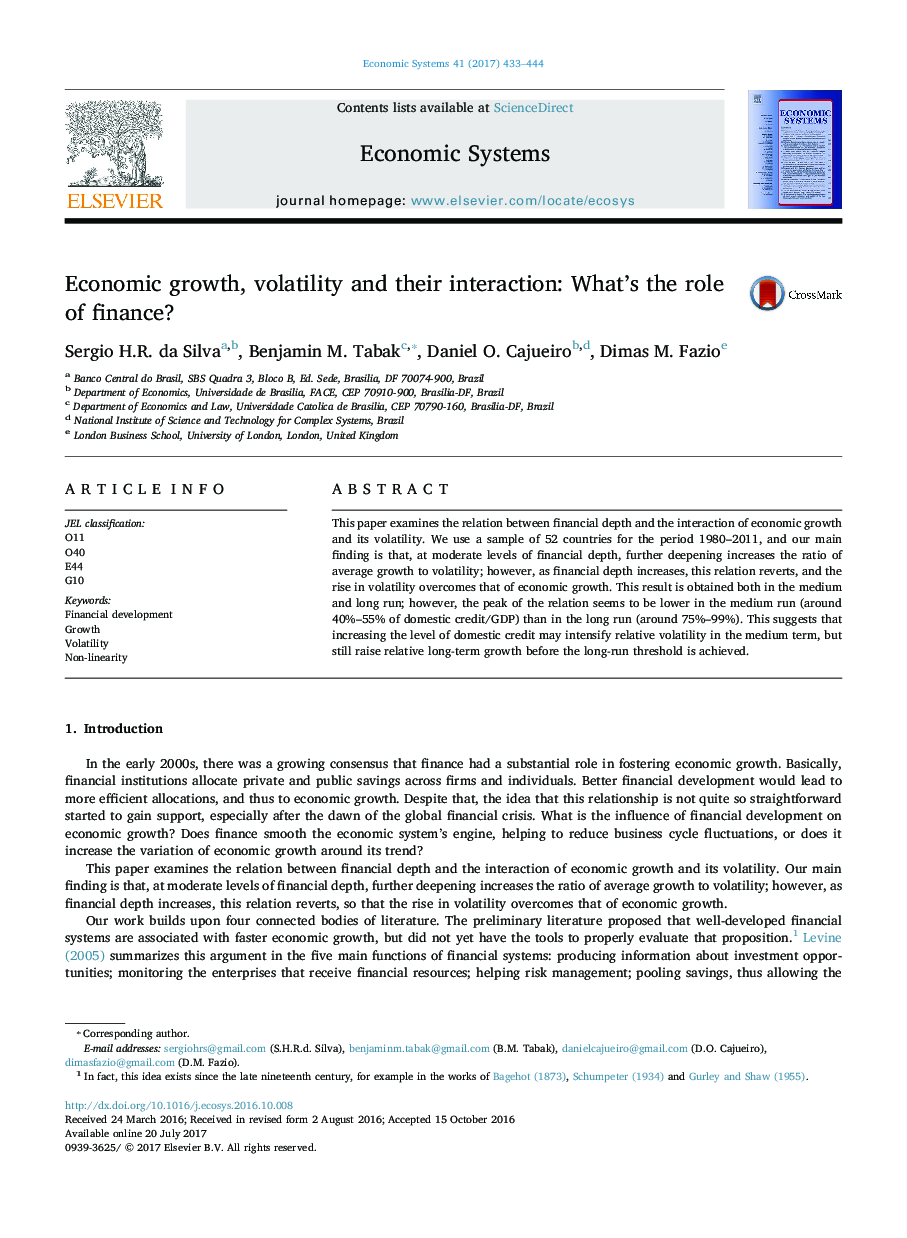| Article ID | Journal | Published Year | Pages | File Type |
|---|---|---|---|---|
| 5056199 | Economic Systems | 2017 | 12 Pages |
â¢We examine the relation between financial depth, economic growth and its volatility.â¢We find a U-shaped relation of financial depth on the ratio of average growth to volatility, both in the medium and long run.â¢The peak of this relation is at around 48% of domestic credit/GDP in the medium run, and at around 87% in the long run.â¢Increasing domestic credit may intensify relative volatility in the medium term, but still raise relative long-term growth.
This paper examines the relation between financial depth and the interaction of economic growth and its volatility. We use a sample of 52 countries for the period 1980-2011, and our main finding is that, at moderate levels of financial depth, further deepening increases the ratio of average growth to volatility; however, as financial depth increases, this relation reverts, and the rise in volatility overcomes that of economic growth. This result is obtained both in the medium and long run; however, the peak of the relation seems to be lower in the medium run (around 40%-55% of domestic credit/GDP) than in the long run (around 75%-99%). This suggests that increasing the level of domestic credit may intensify relative volatility in the medium term, but still raise relative long-term growth before the long-run threshold is achieved.
